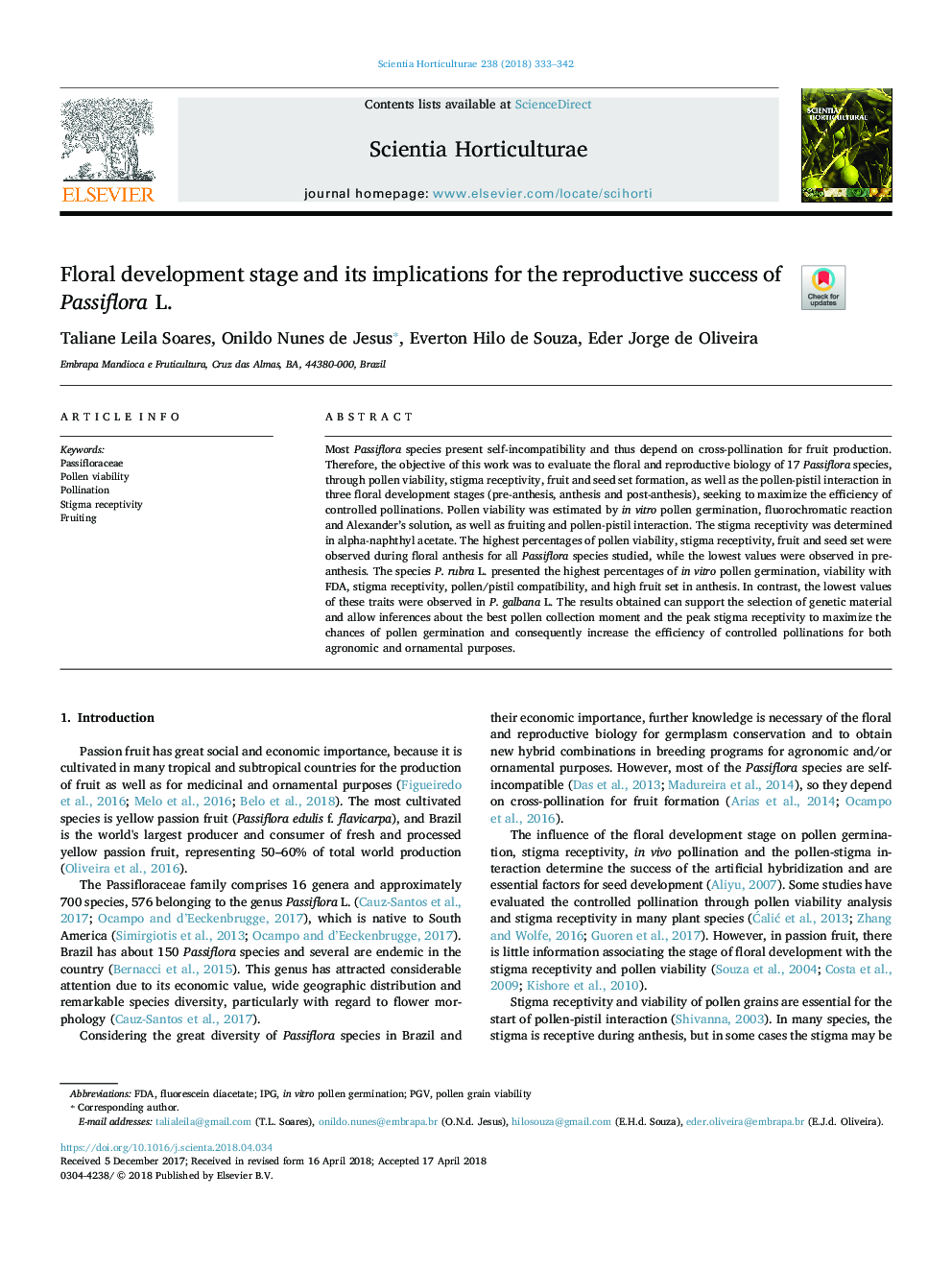| Article ID | Journal | Published Year | Pages | File Type |
|---|---|---|---|---|
| 8892524 | Scientia Horticulturae | 2018 | 10 Pages |
Abstract
Most Passiflora species present self-incompatibility and thus depend on cross-pollination for fruit production. Therefore, the objective of this work was to evaluate the floral and reproductive biology of 17 Passiflora species, through pollen viability, stigma receptivity, fruit and seed set formation, as well as the pollen-pistil interaction in three floral development stages (pre-anthesis, anthesis and post-anthesis), seeking to maximize the efficiency of controlled pollinations. Pollen viability was estimated by in vitro pollen germination, fluorochromatic reaction and Alexander's solution, as well as fruiting and pollen-pistil interaction. The stigma receptivity was determined in alpha-naphthyl acetate. The highest percentages of pollen viability, stigma receptivity, fruit and seed set were observed during floral anthesis for all Passiflora species studied, while the lowest values were observed in pre-anthesis. The species P. rubra L. presented the highest percentages of in vitro pollen germination, viability with FDA, stigma receptivity, pollen/pistil compatibility, and high fruit set in anthesis. In contrast, the lowest values of these traits were observed in P. galbana L. The results obtained can support the selection of genetic material and allow inferences about the best pollen collection moment and the peak stigma receptivity to maximize the chances of pollen germination and consequently increase the efficiency of controlled pollinations for both agronomic and ornamental purposes.
Keywords
Related Topics
Life Sciences
Agricultural and Biological Sciences
Horticulture
Authors
Taliane Leila Soares, Onildo Nunes de Jesus, Everton Hilo de Souza, Eder Jorge de Oliveira,
